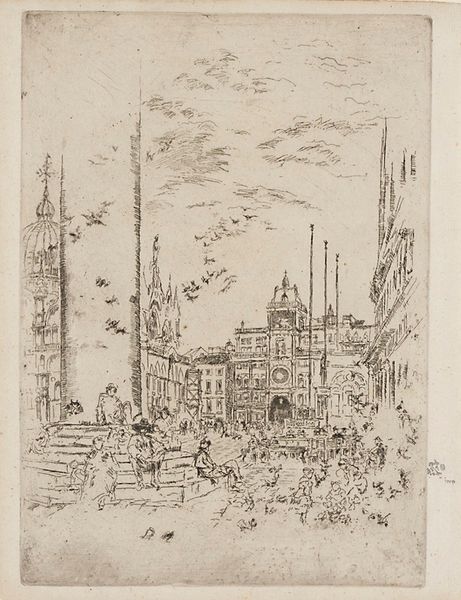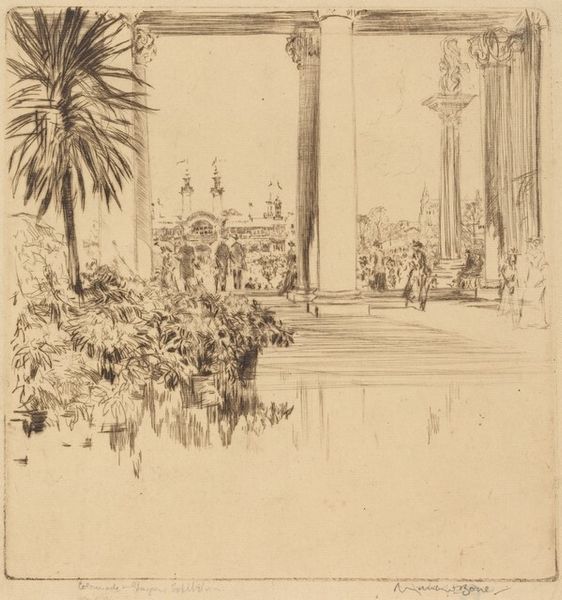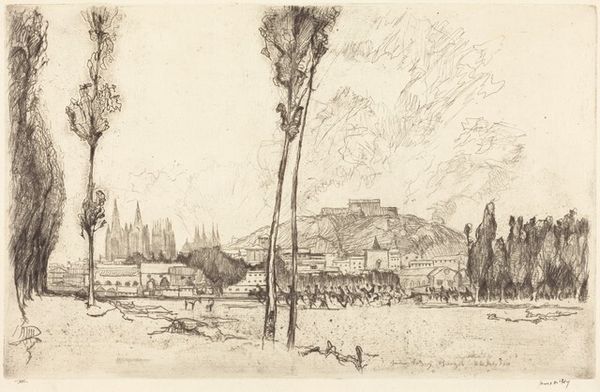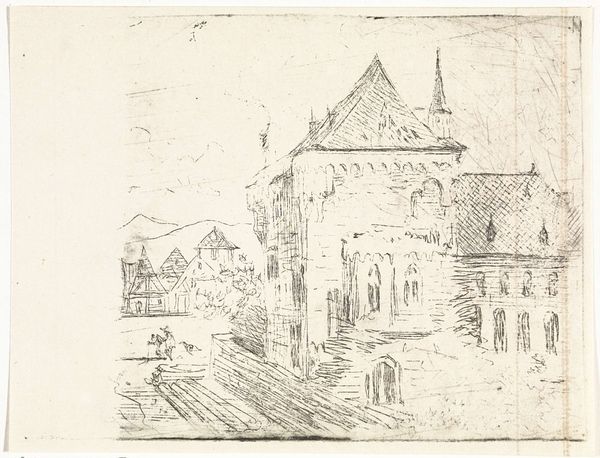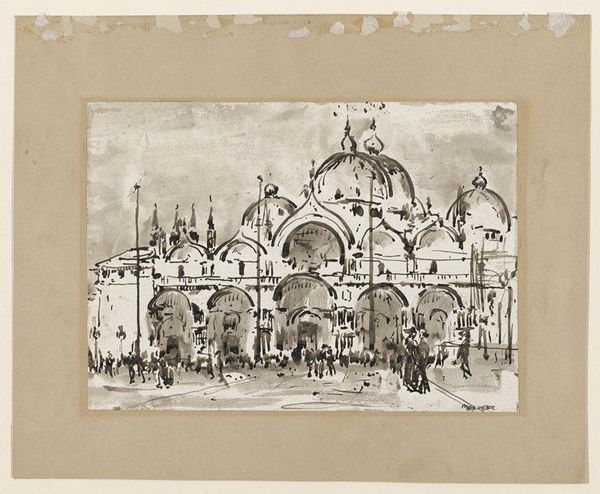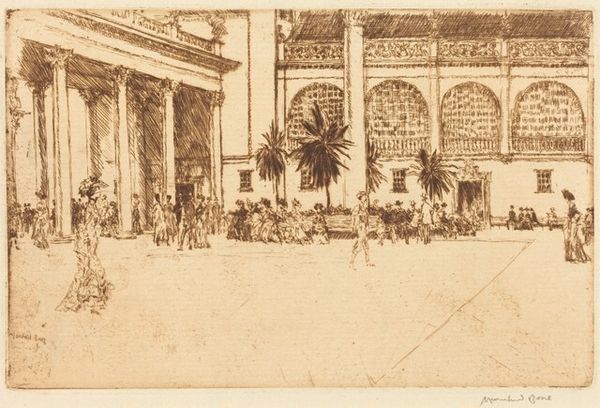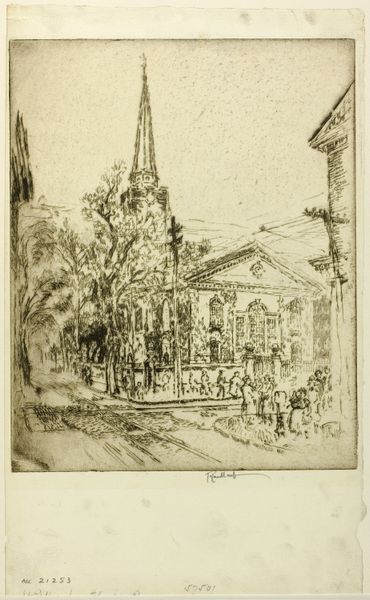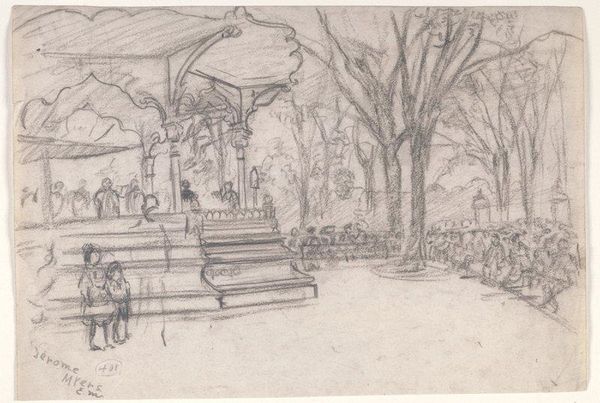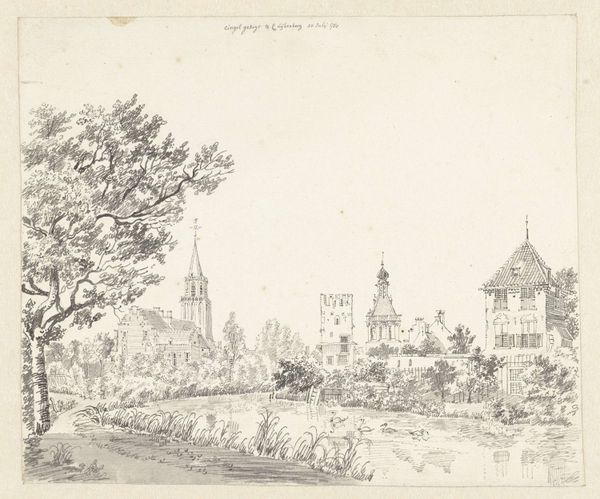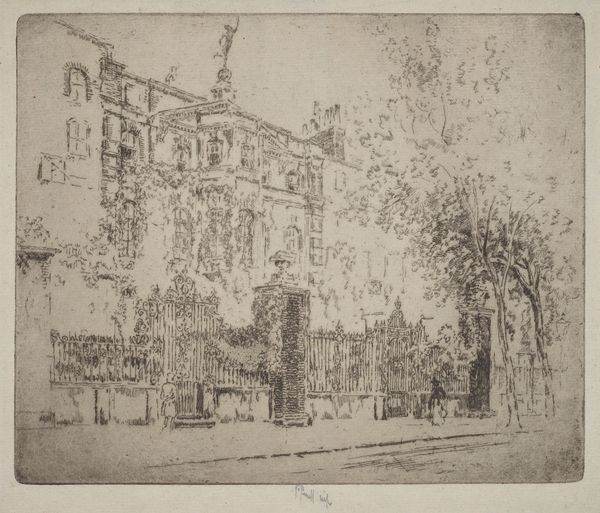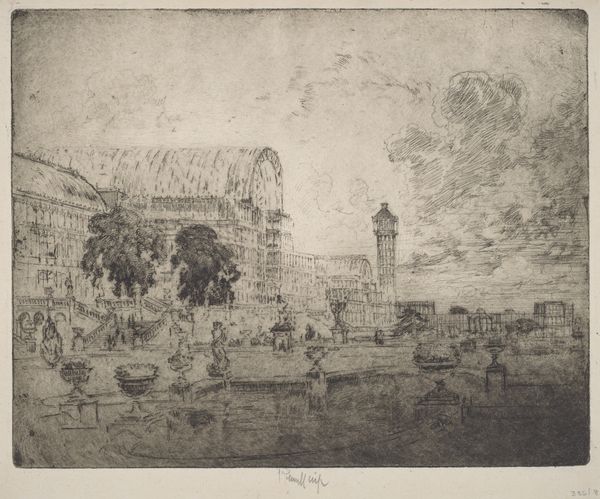
drawing, print, paper, ink, engraving
#
drawing
# print
#
landscape
#
paper
#
ink
#
orientalism
#
cityscape
#
islamic-art
#
engraving
Copyright: Public domain
Curator: So much detail! At first glance, John Frederick Lewis' "Yeni Jami, (or Mosque of the New Tomb)" has an ethereal quality. What do you think? Editor: A city bathed in memory, almost dreamlike. I'm struck by the dominance of the architectural forms and their meticulous, yet somehow restrained representation. The artist's decision to frame the building between the dark foreground trees gives the central view its sacred aura, emphasizing structure and imposing geometries. Curator: Absolutely, it is incredibly composed. Lewis created this print in 1838, rendering the Yeni Jami mosque through delicate ink lines on paper. You know, the 'New Mosque' has always fascinated artists... something about the light, the movement. Lewis' captures a feeling beyond just the visible structure. Editor: Indeed. Consider how the layering of architectural forms is mirrored by the bustling human figures nestled around its base. Semiologically, we have the imposing structure versus the ephemeral figures going about their daily lives. It poses an implicit commentary on permanence versus transience, heaven versus earth. The eye is not free; its progress and regress are always dictated by a symbolic function. Curator: I can see that— the smallness of those figures in contrast to the towering Yeni Jami—creates this contemplative feel. When I look, I don't just see a building; I imagine voices, centuries, prayers; but the artist shows it all in monochromatic stillness. The beauty is in that calm. Editor: Precisely. The architectural draftsmanship isn't just about accurately rendering stone and minaret but about capturing a spatial drama, the visual hierarchy placing the mosque in command and its subjects below as it were. Observe also the effect of perspective in creating that effect. Curator: It does have power! For our listeners who find the print's effect enchanting, I hope that they feel inspired to dive further into the details of the structure itself. Its history and impact, both real and imagined. Editor: Yes, consider how a structure embodies our hopes, ideas, our grand, human desire to defy gravity in this landscape, and through close reading we too may discover the grander story about civilization and life itself.
Comments
No comments
Be the first to comment and join the conversation on the ultimate creative platform.
